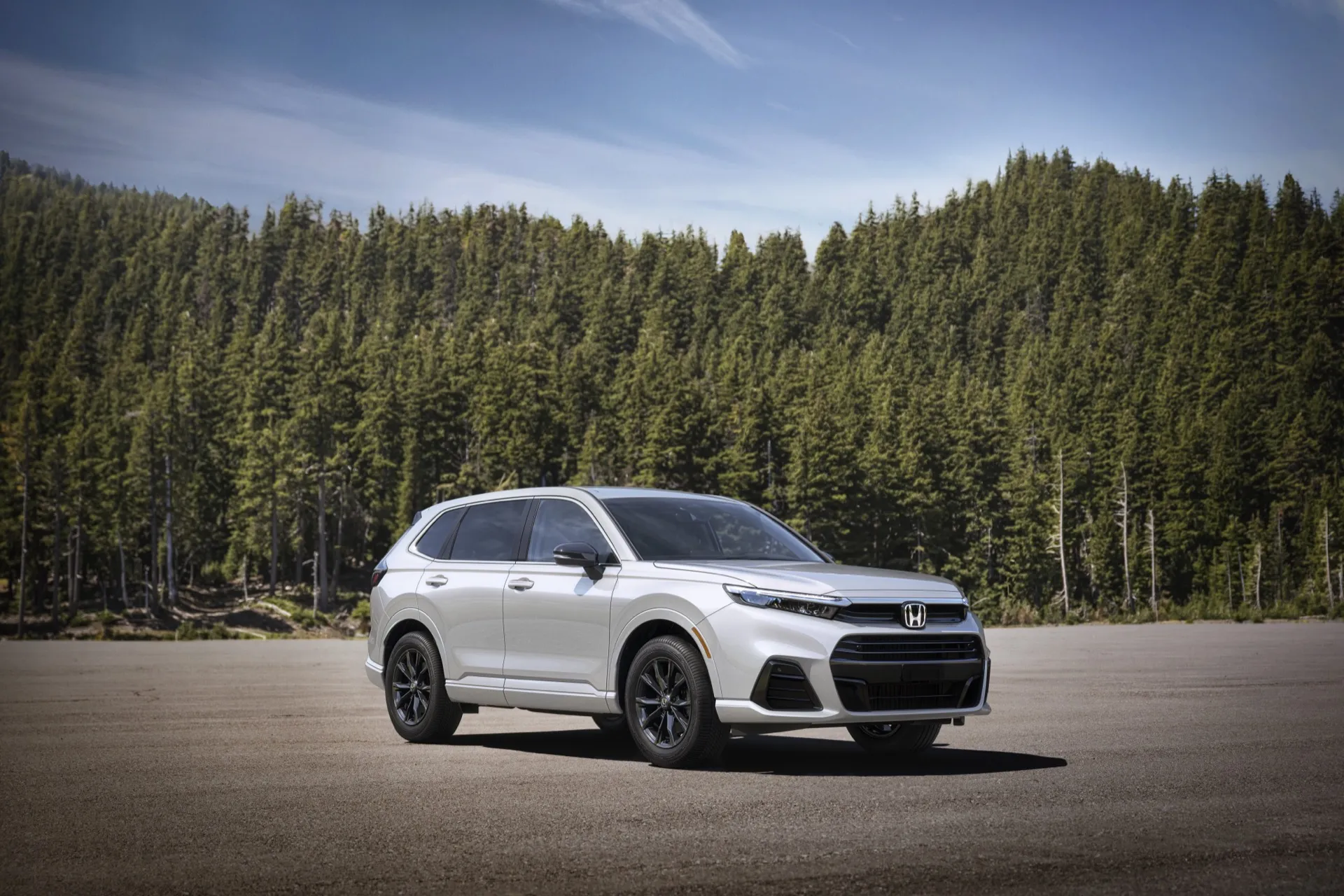The cost port on the entrance fender of the 2025 Honda CR-V e:FCEV is, satirically, what could assist maintain drivers of this fuel-cell automobile away from a state of vary anxiousness.
It alerts plug-in-hybrid-like electrical vary for the commute, with none want for hydrogen—a departure from the modest, hybrid-sized packs which have been typical in fuel-cell passenger automobiles up till now.
Altogether, it’s a expertise combo that on one hand has been a very long time coming and alternatively is a noteworthy concession to a sequence of current realities for fuel-cell automobiles. Whereas the automobiles themselves have been swimming olympic laps of transformation and refinement, the infrastructure has barely been treading water. Hydrogen was supposed to offer gasoline-like driving vary and fast fills, however a number of hydrogen provide pinches lately left even early adopters uneasy about fueling up. And the place are the 50-cent-a-gallon-equivalent hydrogen costs {that a} federally funded examine instructed a decade in the past can be potential by now? Nowhere in sight.

2025 Honda CR-V e:FCEV
As of January, hydrogen costs have been operating a whopping $33.50 per kg—roughly the vitality equal of a gallon of gasoline. That’s about $144 to fill its 4.3-kg tank with 10,000-psi compressed hydrogen gasoline, set to take you an EPA-rated 241 miles. Everytime you’re residence, plug right into a 240-volt residence charger for a pair hours and with about $4.00 of electrical energy, based mostly on California costs, you’ll get a further 29 miles with out utilizing hydrogen.
Honda gained’t reveal how a lot of the battery’s capability is put aside for charging, nevertheless it says that it dedicates no less than as a lot because the Readability Gas Cell’s 1.6 kwh battery towards vitality buffering for the gasoline cell, which doesn’t ramp up immediately. For now we’ll estimate about 14 kwh devoted to plugging in; however engineers cautioned that can differ.
Understanding what the powertrain’s prefer to dwell with should await an extended expertise. However in a quick drive of the CR-V e:FCEV this previous week with just about a full tank of hydrogen and a full cost, I discovered that this new absolutely electrified model of the favored CR-V drives with a hushed confidence, as if it have been a battery-electric mannequin.
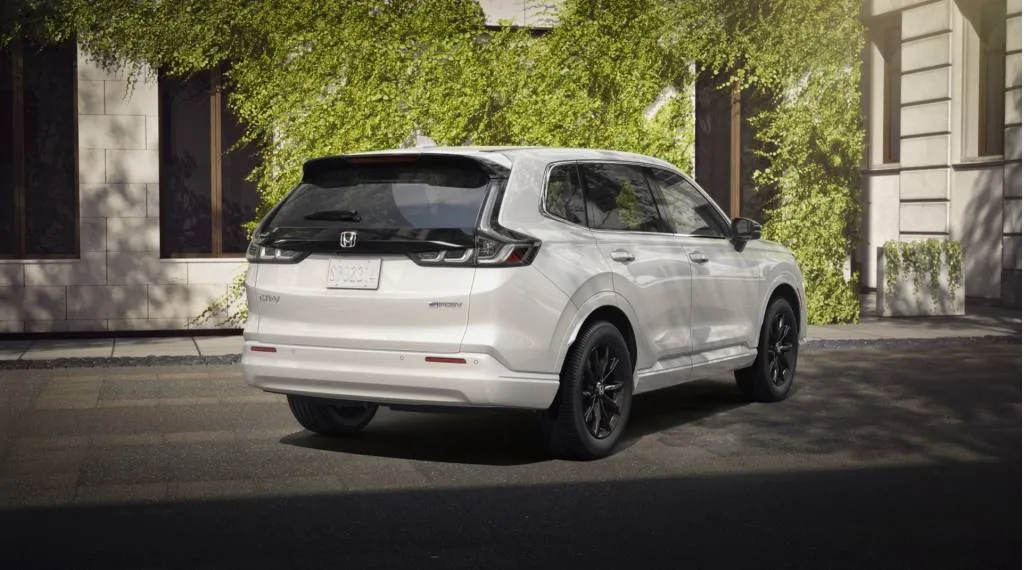
2025 Honda CR-V e:FCEV
Gas-cell tech overcomes some baggage
Making a convincing hydrogen fuel-cell automobile wasn’t the hurdle right here, although. The earlier Honda Readability Gas Cell sedan already introduced that thesis. Just like the rival Hyundai Nexo crossover and Toyota Mirai sedan—which I’ve instructed will be the best-driving sedan Toyota makes—it confirmed that fuel-cell tech might present spectacular drivability and efficiency.
Gas-cell automobiles have steadily gotten higher over the previous 20 years, and I’ve pushed practically all of them. Hydrogen refueling has turn into faster when and the place it’s out there; fuel-cell modules have turn into quieter and fewer obtrusive; packaging retains bettering; and drivability has improved by leaps and bounds.

2025 Honda CR-V e:FCEV
Why haven’t fuel-cell automobiles been given cost ports up to now? I’ve been advised for earlier fuel-cell automobile efforts that including further battery capability defeated the aim of shifting to fuel-cell propulsion, including pointless weight and extra packaging challenges. I’ve additionally been advised that it disincentivizes the buildout of hydrogen infrastructure.
“The reason being, with a view to enhance the hydrogen infrastructure you should use and eat it—so in case you make it chargeable at residence, then these folks gained’t eat the hydrogen,” Toyota Mirai chief engineer Yoshikazu Tanaka summed to Inexperienced Automotive Reviews in 2020, explaining why a cost port had been thought-about for that mannequin however dominated out.
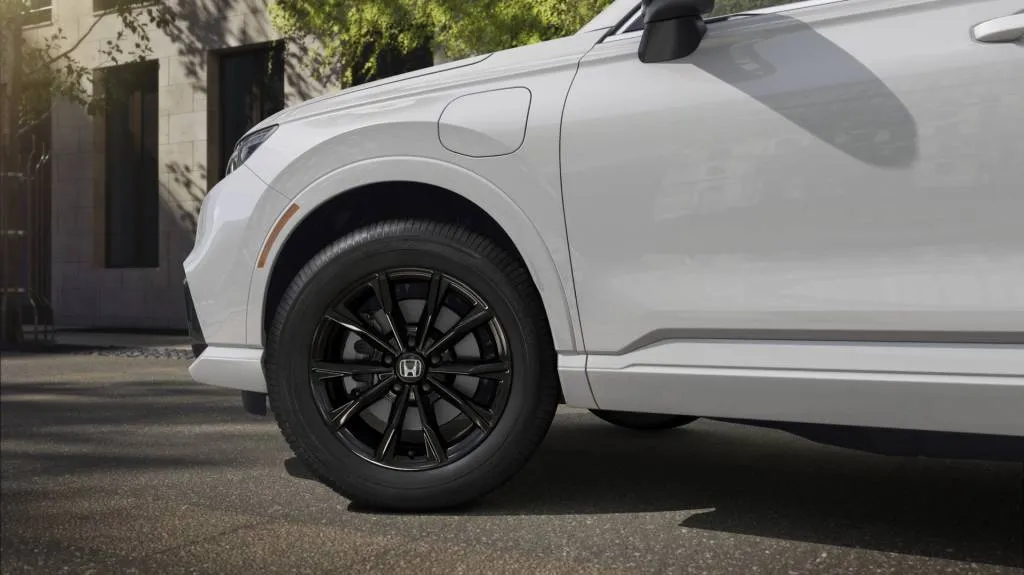
2025 Honda CR-V e:FCEV
First fuel-cell mannequin to reach since hydrogen moved on
4 years later, in 2024, every little thing has modified. All automakers nonetheless speaking the hydrogen discuss have seen the sunshine—that passenger automobiles will now not be the principle focus of the expertise within the close to future, and that the brighter, near-term utility for fuel-cell tech is past passenger automobiles. Honda is embarking on a number of initiatives for electrical vehicles, monitoring the outcomes of a stationary fuel-cell idea for backup energy at its knowledge heart, and even trying towards house functions.
Seemingly relieved of this strain to show the tech versus EVs and plug-in hybrids, the e:FCEV will get the cost port. Honda additionally didn’t appear impassioned to make this fuel-cell automobile a novel design or physique type. From some paces away, it’s going to register as maybe a distinct mannequin yr or trim stage of the ever-present household crossover to the overwhelming majority of the car-buying public.
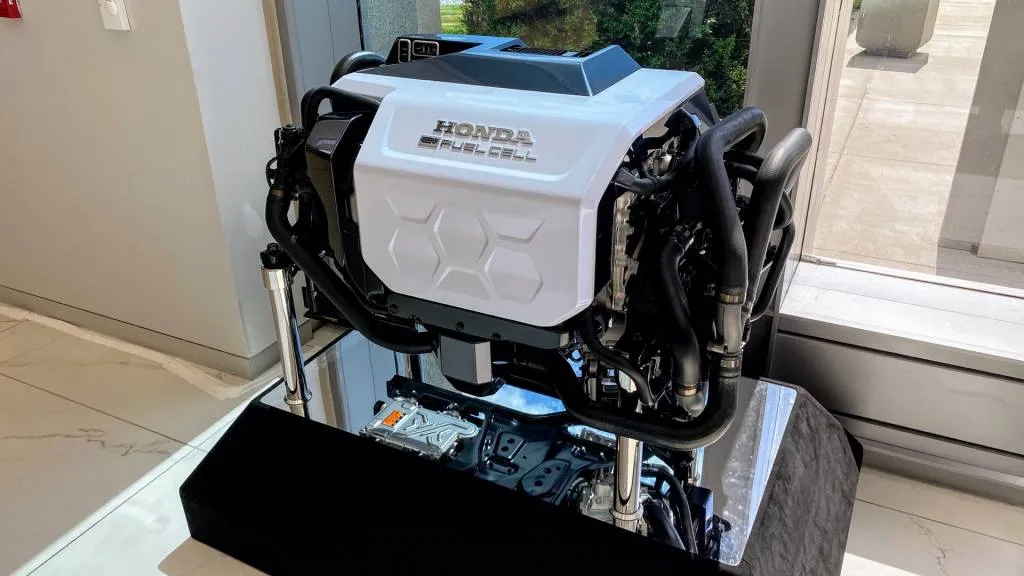
Honda fuel-cell module
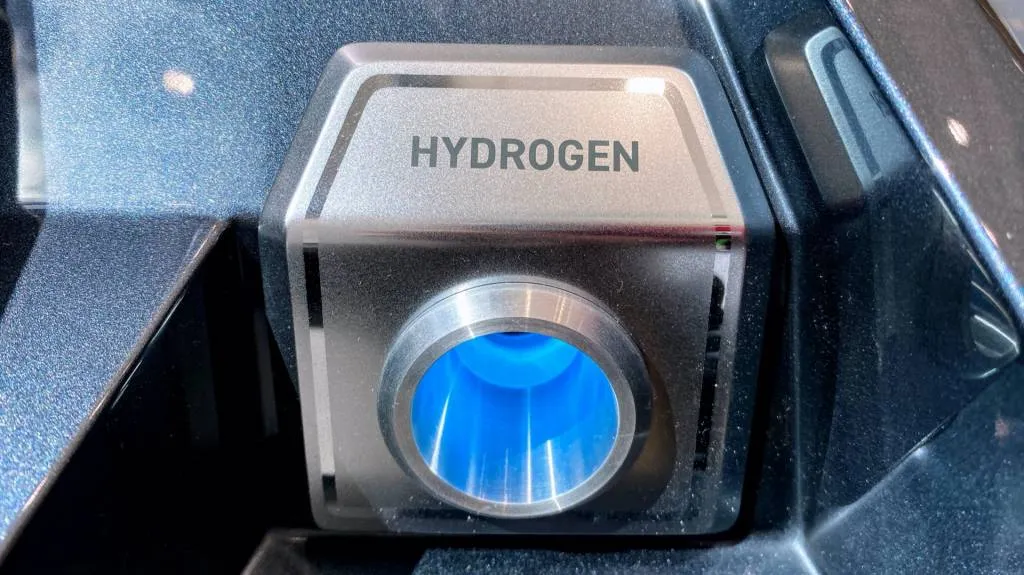
Honda fuel-cell module
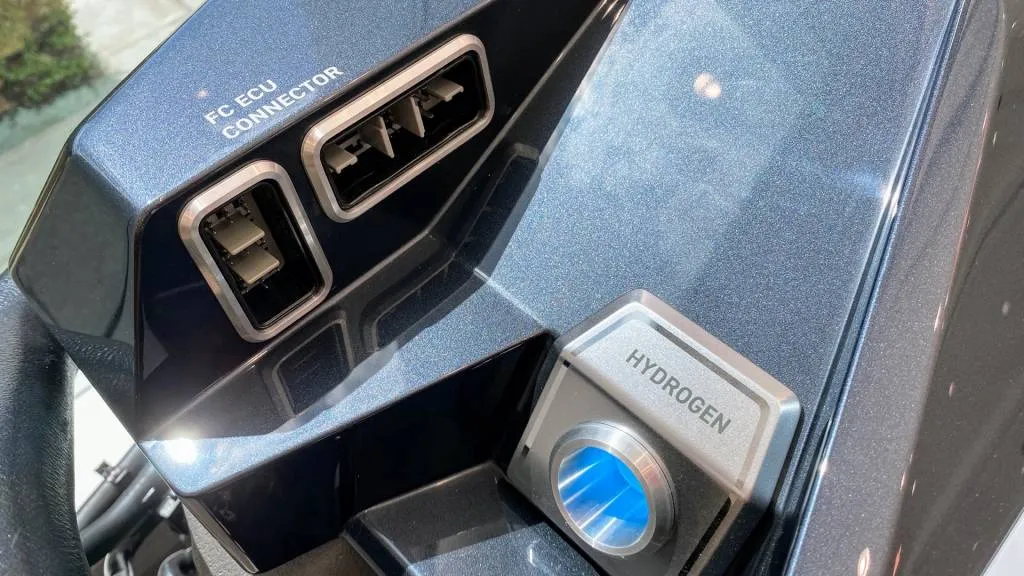
Honda fuel-cell module
Rolling science experiment? Nope, not right here
Like these different fuel-cell automobiles, this particular CR-V now not deserves to be referred to as a rolling science experiment, as its fuel-cell stacks characterize generations of improvement over greater than 25 years. Merely put, wafer-like layers host and harness a chemical response between oxygen and hydrogen, producing electrical energy, waste warmth, and a few water vapor.
The look may be plain, however the implementation is top-notch. The times of fuel-cell stacks sounding like a Dustbuster have been left operating below the seats are lengthy gone. You possibly can simply barely register when the fuel-cell stack is operating, however it’s a must to know what to hear for. You gained’t get your ft moist when loading the automotive both; Honda has relocated the drain for the fuel-cell to the within the suitable rear tire relatively than within the tailpipe place.
Amid these conflicting alerts, that is the beginning of the second technology of what Honda is terming a “gasoline cell module”—developed with GM and made in Michigan—as each corporations pivot the tech towards these industrial automobiles, development automobiles, agriculture, and stationary energy sources.
Toyota has already introduced that it’s contemplating utilizing hydrogen fuel-cell-based energy to fabricate automobiles. Honda says it isn’t fairly there but, nevertheless it’s already utilizing the tech to again up its U.S. analysis and improvement workplaces with retired Readability Gas Cell programs.

2025 Honda CR-V e:FCEV
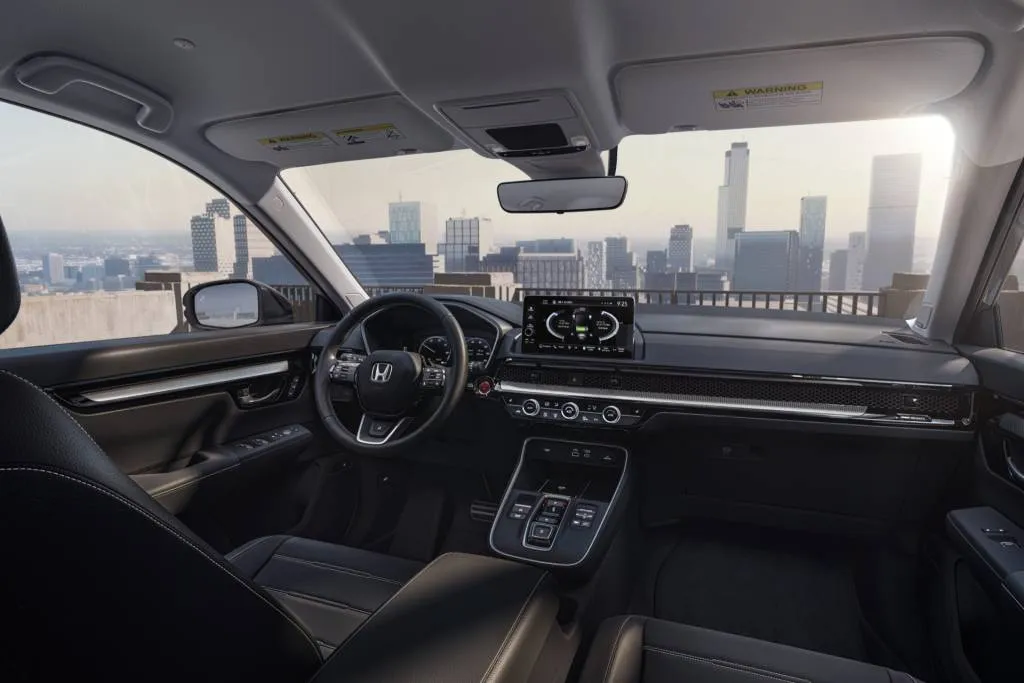
2025 Honda CR-V e:FCEV
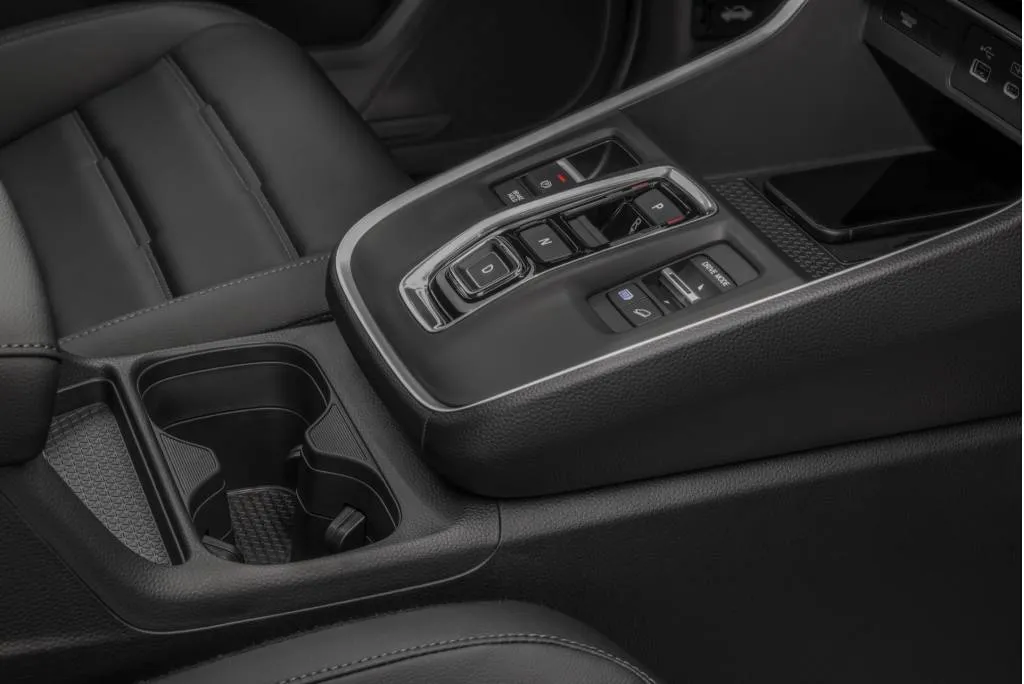
2025 Honda CR-V e:FCEV
Much less hydrogen vary, all of the passenger house
The CR-V e:FCEV’s fuel-cell module makes 92.2 kw—down from the earlier technology’s 103 kw as put in within the Readability Gas Cell, associated to efforts to make the unit extra compact. Honda notes that value has been diminished and sturdiness has been gained, and it claims vastly diminished noise and vibration from the unit itself. With an air-to-air intercooler for the fuel-cell stack, relatively than water cooling, the system can now begin up in temps as little as -22 levels F.
The hardest subject in fuel-cell fashions is usually the place to retailer the hydrogen tanks, which must be cylindrical, a form that doesn’t pair properly with seating, cargo house, or aero-savvy. Whereas the Nexo, Mirai, and former Readability Gas Cell all checked in at properly over 300 miles of vary however with a packaging pinch usually involving the trunk or rear seats, the e:FCEV appears to have prioritized that packaging over vary.
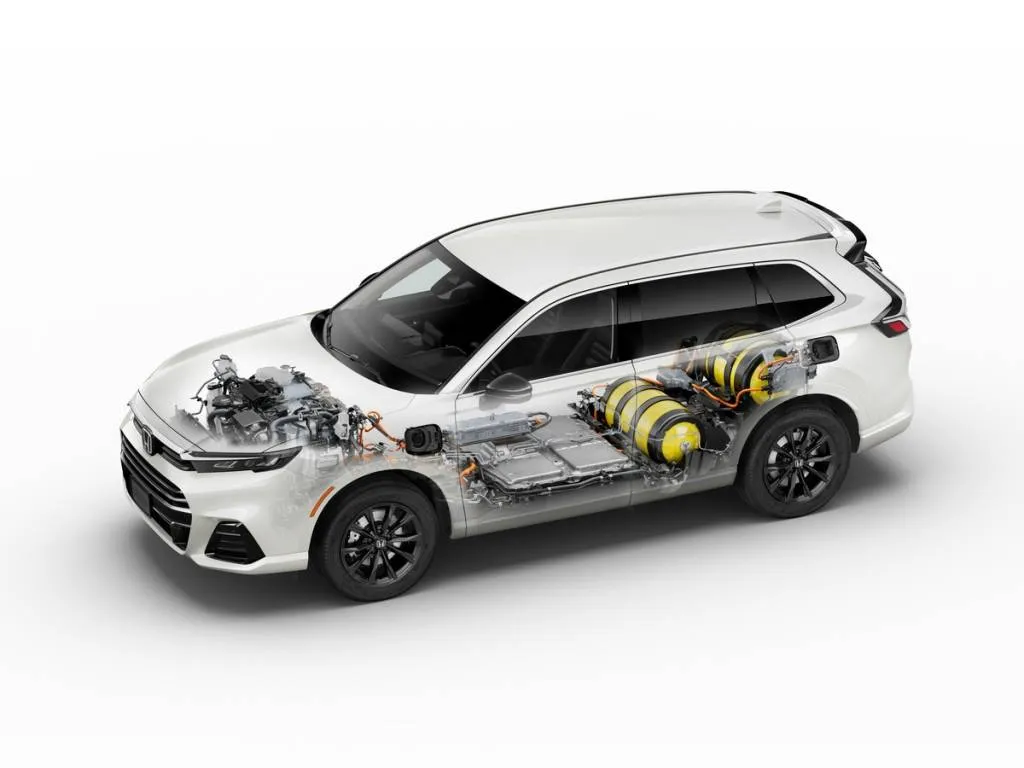
Honda CR-V e:FCEV
Hydrogen storage stays cut up into two cylindrical tanks, however complete storage is 4.3 kg, down from 5.5 kg within the Readability Gas Cell. Varied core elements of the hydrogen system and powertrain have gone modular, with the EV battery below the ground in the course of the automobile. The 2 tanks lay throughout the width of the automobile under and behind the again seat, in order to not impression passenger house in any respect versus the CR-V Hybrid.
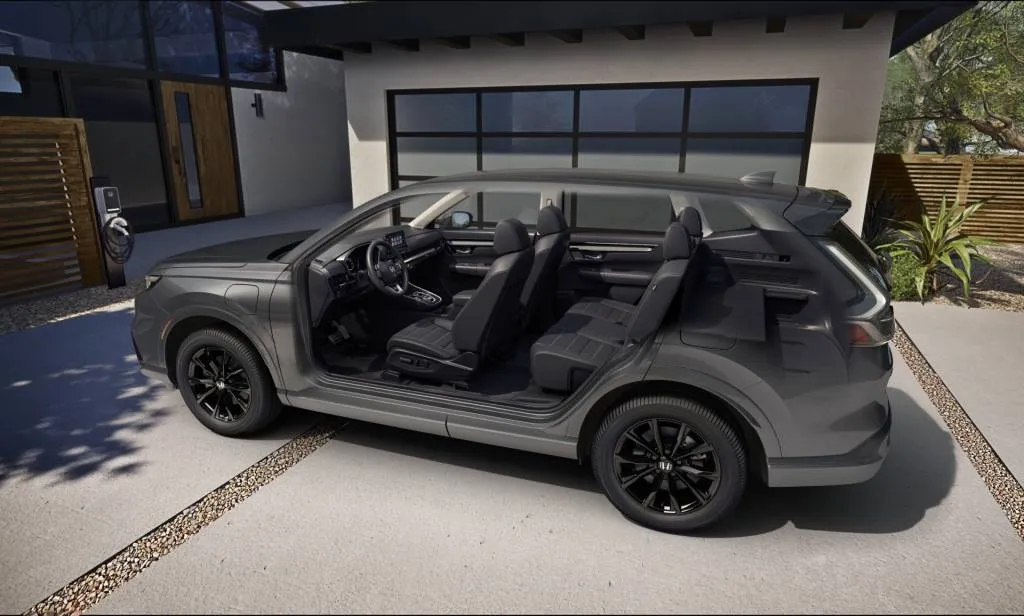
2025 Honda CR-V e:FCEV
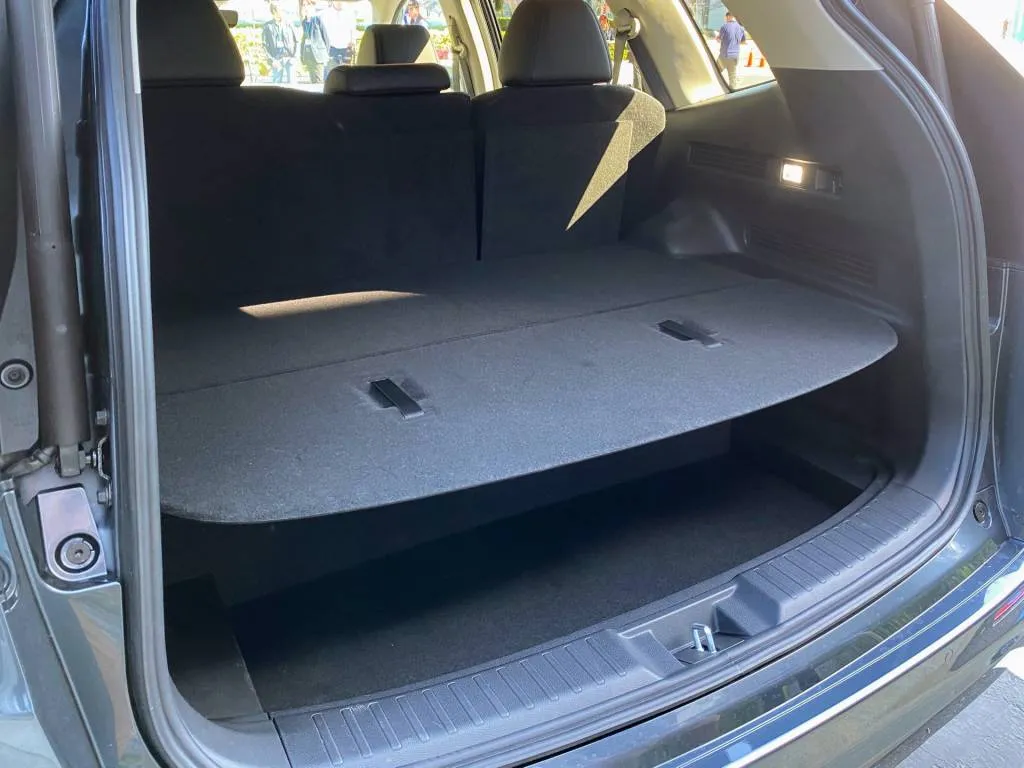
2025 Honda CR-V e:FCEV
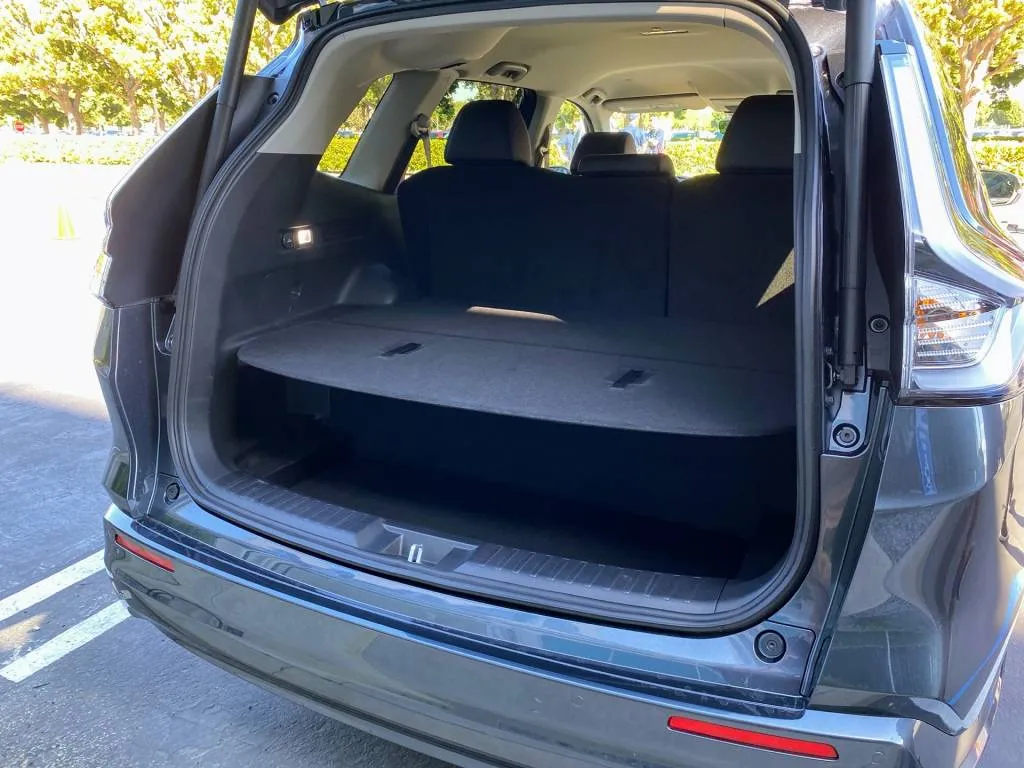
2025 Honda CR-V e:FCEV
The e:FCEV feels packaged just about like another CR-V from the entrance seat or rear seat. The one exception is that, in case you fold down the rear seatbacks there’s a hump throughout the ground to navigate—though a two-position rear cargo shelf in again helps benefit from the compromise in day-to-day use. As in different CR-V fashions, you’ll discover sufficient headroom and legroom in again, even in case you’re sitting behind a taller driver, whereas seats don’t have a variety of aspect help however are delicate and supportive in any other case.
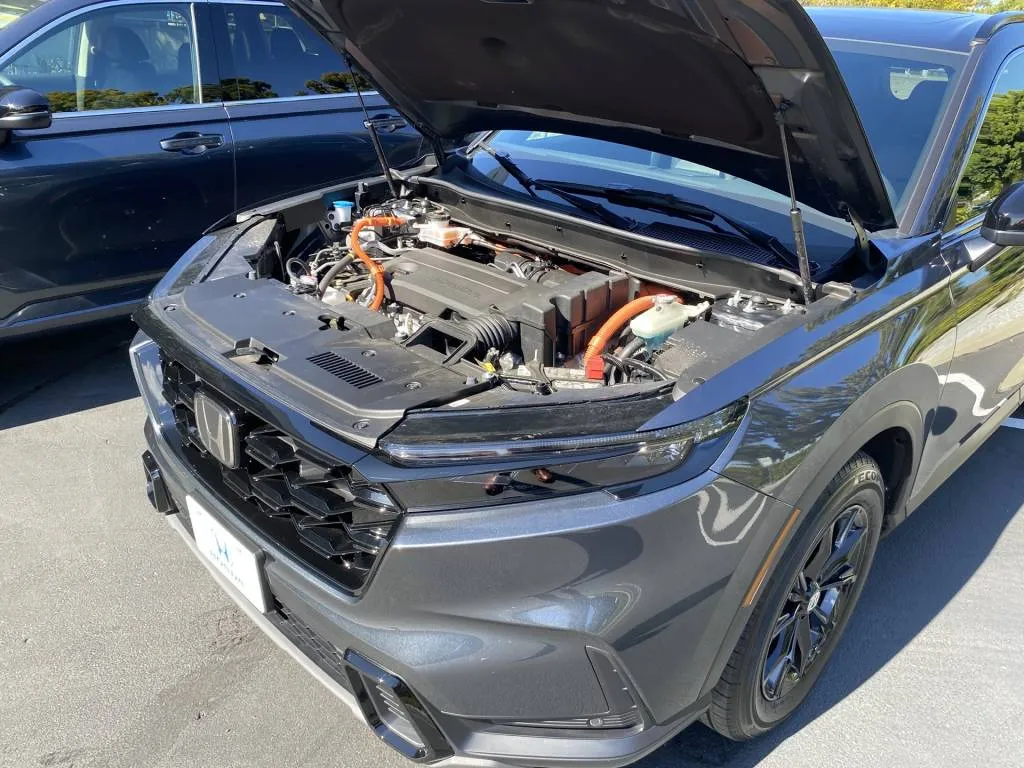
2024 Honda CR-V Hybrid
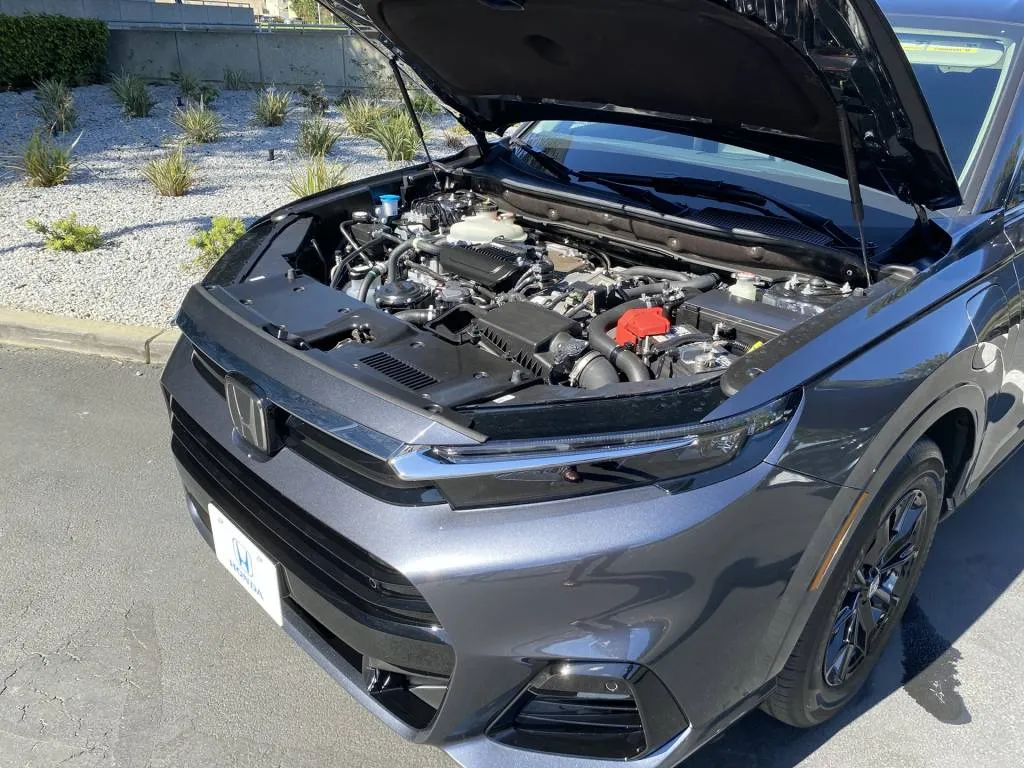
2025 Honda CR-V e:FCEV
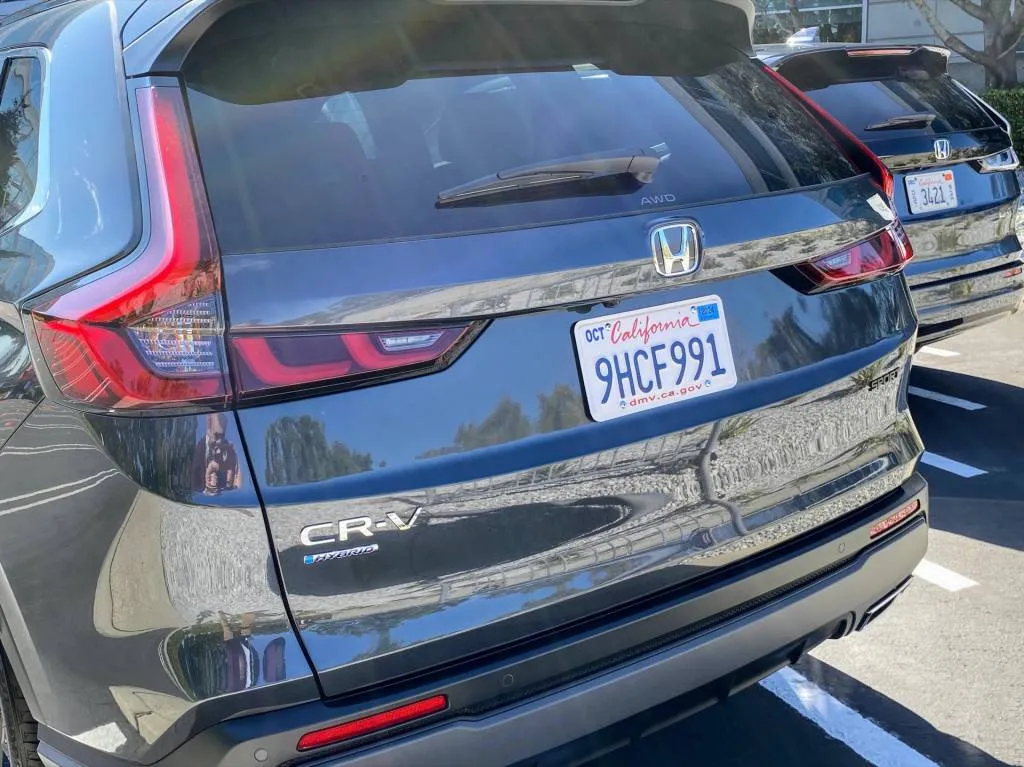
2024 Honda CR-V Hybrid

2025 Honda CR-V e:FCEV
On the skin, a sequence of entrance and rear design tweaks soften the look considerably, whereas 10-spoke, 18-inch alloy wheels appear to be they’d match proper into the remainder of the CR-V lineup however are distinctive to this variant. There’s a bigger grille opening (look decrease); the entrance overhang has been prolonged about 4 inches; clear taillight lenses and decrease physique garnishes give it a considerably completely different perspective, however even subsequent to a Hybrid it appears refined.
As in different CR-V fashions, a honeycomb mesh midline might be probably the most placing facet concerning the front-seat cabin space. The FCEV’s seats additionally get completely different, bio-based artificial leather-based, plus artificial leather-based for the steering wheel.

2025 Honda CR-V e:FCEV
e:FCEV is derived from a PHEV Individuals can’t get
The CR-V e:FCEV is front-wheel pushed and produces a peak 174 hp and 229 lb-ft of torque. Honda didn’t have a peak energy determine for the automobile if it’s out of hydrogen but nonetheless driving on a full cost. Engineers confirmed that operating the gasoline cell module is required for peak energy.
Honda defined that in conceiving the e:FCEV it borrowed as a lot as it might probably from the European-spec CR-V Plug-In Hybrid, together with its thermally managed lithium-ion battery pack, its inverter, and its electrical motor. In all, the plug-in fuel-cell model weighs basically the identical because the plug-in hybrid and about 500 kilos greater than the CR-V Hybrid—doubtless round 4,300 kilos.
Honda signifies an official 0-62 mph acceleration time of 9.5 seconds for the CR-V PHEV, the place the motor makes a better 181 hp and 247 lb-ft of torque. Anticipate 0-60 mph in about 10 seconds right here within the fuel-cell model. The CR-V e:FCEV chirps respectably off the road however with out something pinning you to your seat. My drive solely took me to about 55 mph, and there I observed the powertrain didn’t really feel fairly as perky.

2025 Honda CR-V e:FCEV
To suit impression zones with the gasoline cell module’s completely different underhood house, the FCEV will get a brand new entrance bulkhead plus a brand new rear tank body that’s utilized as a structural member. Solely while you arise proper subsequent to it do you discover the marginally longer nostril. Rear roll rigidity has additionally been elevated, with stiffer rear stabilizer bar mounts (stabilizers entrance and rear).
I used to be in a position to drive the e:FCEV back-to-back with the U.S.-spec CR-V Hybrid, with dealing with restricted to some L-shaped curves round warehouses and strip malls. I bought the impression that the e:FCEV does drive heavier, in addition to a bit stiffer, to regulate the burden, with extra harsh bounding motions over giant heaves and railroad tracks. Total, it’s a smooth-riding automobile however not inspiring in any efficiency sense.

2025 Honda CR-V e:FCEV and 2024 Honda CR-V Hybrid
EV-like regen modes, can energy all kinds of substances
There are just a few key interface variations versus different CR-Vs. The shift lever is changed by push-buttons, and the Drive Mode selector (Regular, Sport, and Econ) has been moved to the suitable aspect of the console, together with the powertrain mode button (Auto, EV, Save, and Cost). EV mode locks in plug-in cost till you utilize up that quantity of the battery, whereas Save runs the gasoline cell practically on a regular basis, utilizing the buffer portion of the battery solely. I shortly discovered that Sport and Save can’t be chosen on the similar time (as a result of the gasoline cell is required for max energy). 4 ranges of deceleration can be chosen by way of zinc-alloy paddles—in the identical approach as Civic and Accord hybrids, and with the strongest regen not fairly a one-pedal mode.
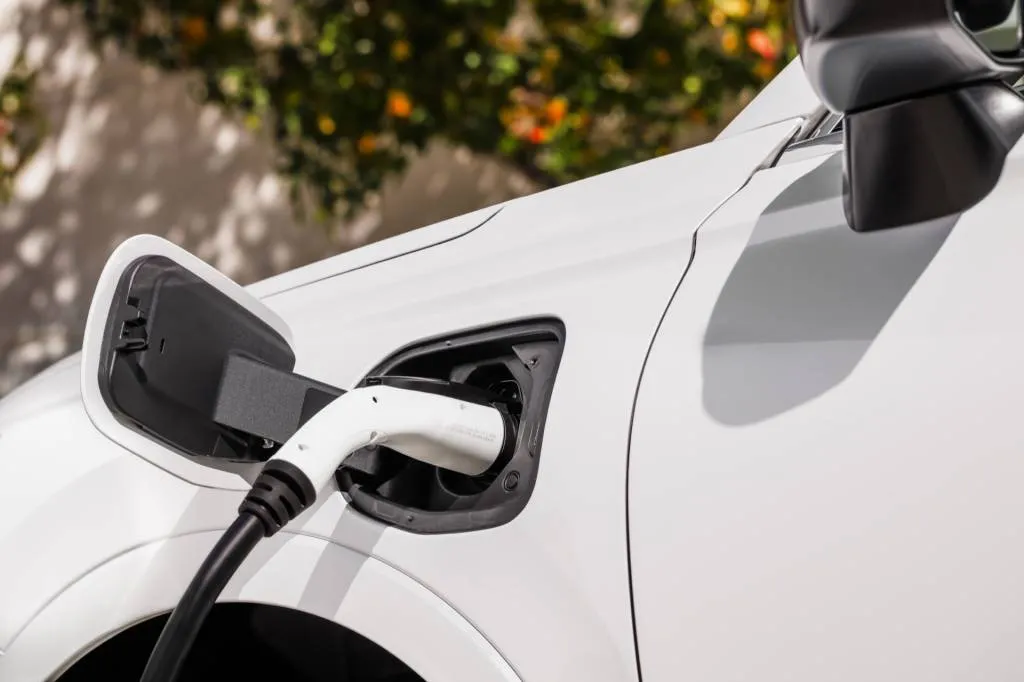
2025 Honda CR-V e:FCEV
The connector that’s included with the CR-V presents a 110-volt energy outlet that may run home equipment, energy instruments, tenting gear, or an air conditioner, at as much as 1.5 kw. Honda has instructed that the CR-V e:FCEV has broader V2X skill baked in, doubtlessly permitting the automobile to share vitality with the grid, the house, or different automobiles, however that performance isn’t right here but.
There are solely two colours, and the FCEV is just supplied in high Touring kind with heated entrance seats, a heated steering wheel, wi-fi telephone charging, 12-speaker Bose Centerpoint audio, a ten.3-inch gauge show, and a model of Honda’s 8.9-inch touchscreen system with wi-fi Apple CarPlay and Android Auto. I paired my iPhone in a short time and used CarPlay for the brief driving route. You possibly can very simply flip backwards and forwards between that and the dynamic shows explaining the powertrain.
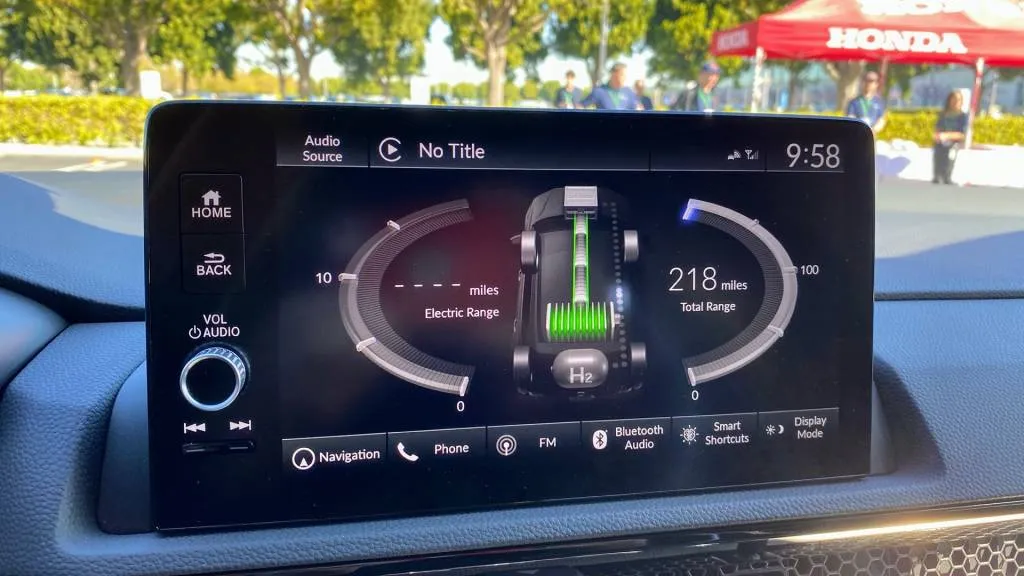
2025 Honda CR-V e:FCEV
An unique in CR-V garments
When the Readability Gas Cell arrived, Honda emphasised that whereas gross sales of that automobile can be within the 1000’s, these next-generation fashions can be within the tens of 1000’s.
Now Honda is aiming for two,000 items per yr of those FC programs, throughout all these functions, together with simply 300 CR-V e:FCEVs yearly at first, with hopes for 600 of them yearly. They’ll be supplied solely via a particular lease, and Honda shall be overlaying among the hydrogen. It additionally flags that the e:FCEV qualifies for California single-occupant HOV lane use.

2025 Honda CR-V e:FCEV
The e:FCEV is successfully an unique automotive masquerading as a CR-V. The few hundred Honda makes per yr shall be basically handbuilt in Marysville, Indiana. Honda famous that that is no automated meeting line; it takes 20 days to construct every FCEV.
Honda is finally delivering hydrogen fuel-cell expertise in a refreshing kind—one which is sensible not with a hypothetical infrastructure which may arrive (and be dependable, and inexpensive) in a future state of affairs, however with a strong backup for at present’s work-in-progress hydrogen actuality.
Within the close to time period, battery electrical has gained, however gasoline cells have promise over the long run, when all the problems with the infrastructure and hydrogen technology have been solved. For that, the CR-V e:FCEV is a really nice-driving bench-warmer.

